Jack Points
The scissor jack that comes with the car is fine for changing a wheel, but is not intended to support the car with you under it. A hydraulic jack helps get the car in the air much quicker and easier than the factory scissor jack; jackstands are what keeps the car up, whilst your underneath.
- Use level ground. The car will shift as you lower it onto the jack-stands.
- Don’t use cinder blocks as jack stands… they may shatter.
- If you’re really paranoid (or a little unsure) then keep a cell or cordless phone in reach, just in case.
- For a little extra safety put a spare wheel under the chassis rail.
- Tarmac can be soft, particularly in heat. Put some thick plywood down under the jackstands.
- If your car is lowered, or has a body kit that is low to the ground, then drive the front wheels onto some wooden 2x4 to raise the front, and prevent the body work hitting the ground as you raise the back-end.
Jack Points
Resting on jack-stands the car is not going to move anywhere, and is safe to work under. Jack stands are cheap, around $50 for two. The MKI is around 1.5 tons, so get jackstands that can support around 2 tons.
The two points on the left and right sides of the car are for jack-stands, or the spring-jack that comes with the car. The points to the front and rear of the car can be used with a car-jack to raise the car so that the car can be lowered on to more robust jack-stands.
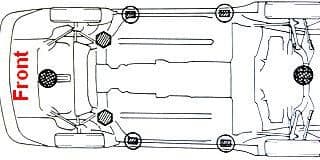
Jacking the Car
Wedge the wheels that will remain on the ground with something to prevent the car rolling (large bricks will do fine). Also use the parking brake and put the car in gear if you are lifting the front.
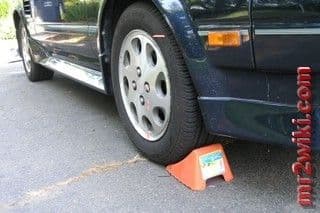
The rear jack point is in the center of this picture, which is looking from under the rear of the car. Typically you’d use a hydraulic jack to raise the car to an appropriate height.
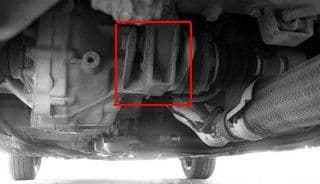
Jack the car up, and place the jack-stands in position on the left and right of the car:
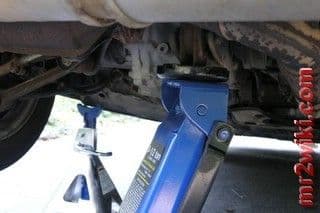
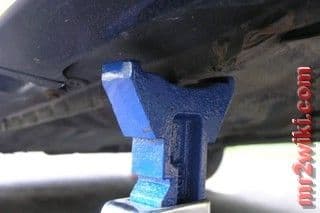
Now slowly lower the hydraulic jack, so the car rests on the side jack-stands.
